
Deep in the heart of East Kalimantan, along the mighty Mahakam River, the Dayak Bahau people perform an ancestral ritual that merges the eerie with the divine. Known as the Hudoq Dance, this centuries-old performance embodies a prayer for abundant crops, protection from pests, and a harmonious link with the spirit world. Through elaborate wooden masks and trembling leaves that flutter with every movement, the dance tells a story of survival, spiritual belief, and indigenous identity.
The word "Hudoq" itself means "spirit" or "ghost," and this dance is more than just an art form—it is a sacred connection to the ancestors and natural forces. Typically performed after clearing the land for rice planting (a stage known as manugal), the Hudoq Dance invites benevolent spirits to bless the soil and keep malevolent ones at bay.
The Origins of Hudoq
The Hudoq ritual stems from the agricultural cosmology of the Dayak Bahau, one of the many sub-ethnic groups in Borneo with a rich animistic worldview. According to legend, long ago, the spirits of pests descended upon Dayak farmland, destroying crops and bringing famine. To repel these entities, spiritual leaders summoned performers wearing terrifying masks—representing the spirits themselves—in a hope that mimicking them would appease or drive away the real threats.
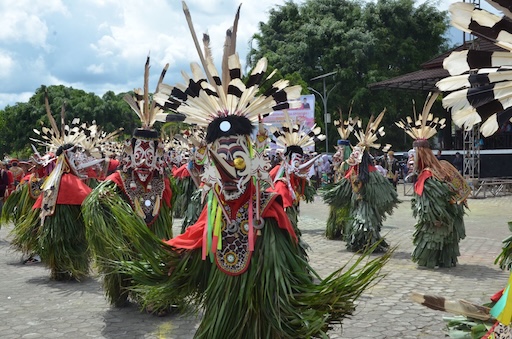
Today, the dance continues to reflect that original intention. But now, it also serves as a cultural preservation effort, a tourist attraction, and a point of pride in the Dayak Bahau heritage. It is often performed during the Hudoq Pekan Budaya (Hudoq Cultural Week) held in East Kalimantan around harvest time.
Masks, Costumes, and Sacred Movements
The most captivating aspect of the Hudoq Dance is its visually striking costumes. Each dancer dons a carved wooden mask, often painted red, white, or black, with exaggerated features—large eyes, protruding fangs, and elongated ears. The masks are modeled after mythical creatures, birds, or jungle spirits, and no two are exactly alike.
The bodies of the dancers are wrapped in layers of dried banana leaves or corn husks, which rustle and shimmer as they move. This natural costume represents fertility and the harmony between human and environment. The rustling sound is believed to carry spiritual vibrations through the earth and sky.
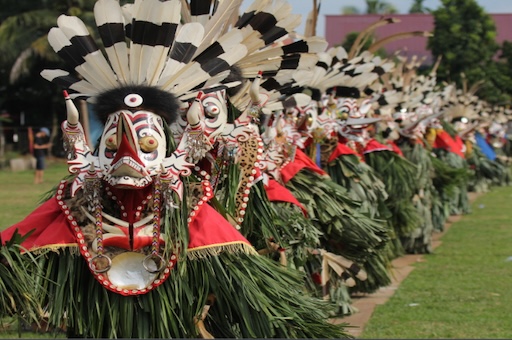
The choreography involves slow, deliberate movements—often with hands extended and bodies swaying. Dancers leap and twist in symbolic patterns that represent the cycle of planting and harvesting. The rhythmic beat of drums and gongs guides them, invoking ancestral presence throughout the ceremony.
Ritual Meaning and Community Participation
Unlike modern performances held on stages, the traditional Hudoq Dance takes place in the center of the village. The entire community gathers in a sacred circle, and the dance becomes a communal offering. Elders recite prayers, mothers bring offerings of rice and fruit, and children are taught to observe with reverence.
It is believed that when the dance is performed correctly and with sincere intention, the village will be rewarded with strong harvests and spiritual protection for the coming year. In this sense, the Hudoq Dance is not simply a cultural event—it is an act of devotion, survival, and identity reinforcement.
Modern Challenges and Revival
Like many indigenous traditions, the Hudoq Dance faced threats from modernization, religious shifts, and deforestation. Younger generations were once reluctant to continue the practice, viewing it as outdated or incompatible with their modern lifestyle. However, recent decades have seen a powerful resurgence.
Government support, cultural preservation grants, and international recognition have helped revitalize the tradition. In 2018, the Hudoq Dance was registered as part of Indonesia’s National Intangible Cultural Heritage. Today, schools in East Kalimantan include Hudoq as part of local arts education, ensuring that the sacred movements will not be forgotten.

A Living Bridge Between Worlds
For the Dayak Bahau, the Hudoq Dance is more than performance—it is a living prayer and a bridge between worlds. It connects the physical and the spiritual, the present and the past, the land and its people. To witness a Hudoq performance is to glimpse into a worldview where agriculture, ancestry, and the supernatural are all part of the same cycle.
In a global era increasingly distanced from the land and its rhythms, Hudoq stands as a reminder of how deeply culture and survival can intertwine. It is fierce, it is beautiful, and it is sacred.
Share this story and inspire others.
Tags: Hudoq Dance, Dayak Bahau, East Kalimantan, Borneo Culture, Indonesian Traditional Dance, Spirit Mask Dance, Ritual Dance Indonesia, Kalimantan Indigenous Culture, Dayak Traditions, Harvest Rituals Indonesia, Sacred Mask Dance, Tribal Dance Kalimantan, Hudoq Festival, Dayak Ritual Performance, Hudoq Ceremony
 Desa Trunyan – Where the Dead Rest in the Open (and Don’t Smell)
Desa Trunyan – Where the Dead Rest in the Open (and Don’t Smell)
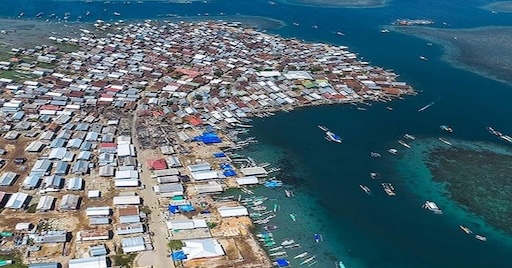 Pulau Bungin – The Densest Island on Earth?
Pulau Bungin – The Densest Island on Earth?
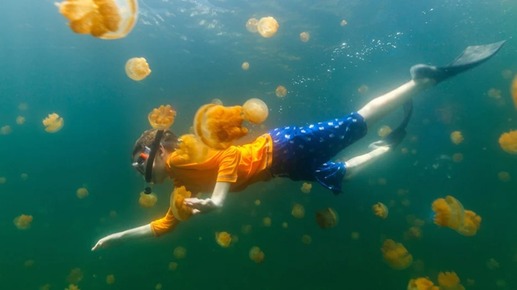 Lake Kakaban – The Jellyfish Lake That Doesn’t Sting
Lake Kakaban – The Jellyfish Lake That Doesn’t Sting
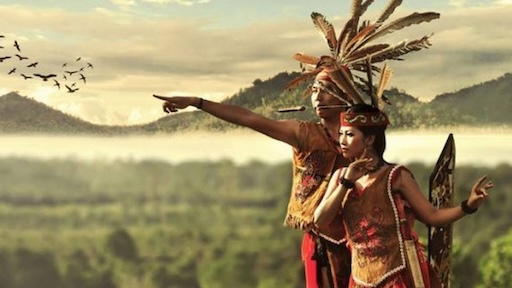 Manajah Antang Ritual – Bird Spirits and Ancestral Messages in South Kalimantan
Manajah Antang Ritual – Bird Spirits and Ancestral Messages in South Kalimantan
 Harau Valley – Indonesia’s Slice of Norway
Harau Valley – Indonesia’s Slice of Norway
 Tiwah Ceremony – Guiding Ancestral Spirits Among the Dayak Ngaju
Tiwah Ceremony – Guiding Ancestral Spirits Among the Dayak Ngaju